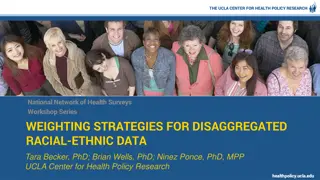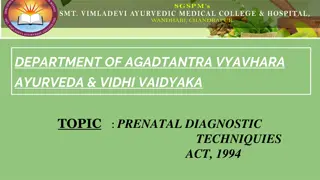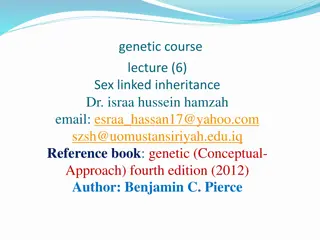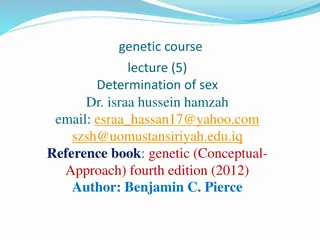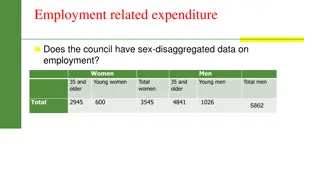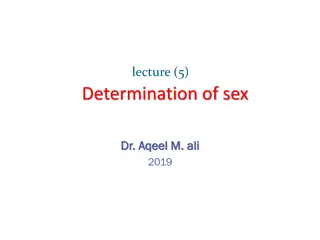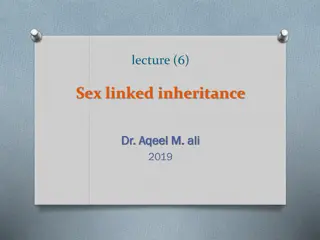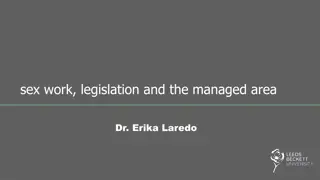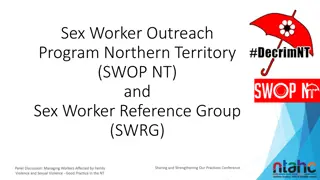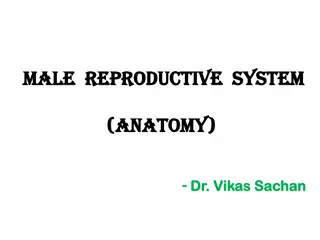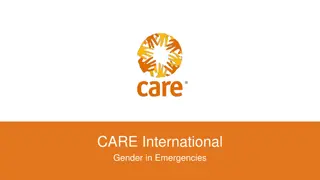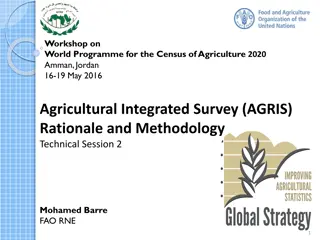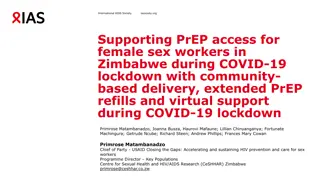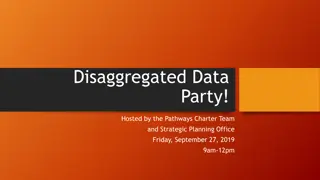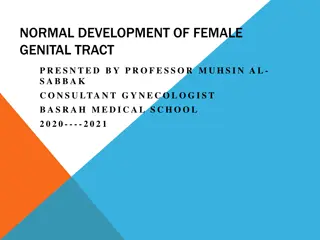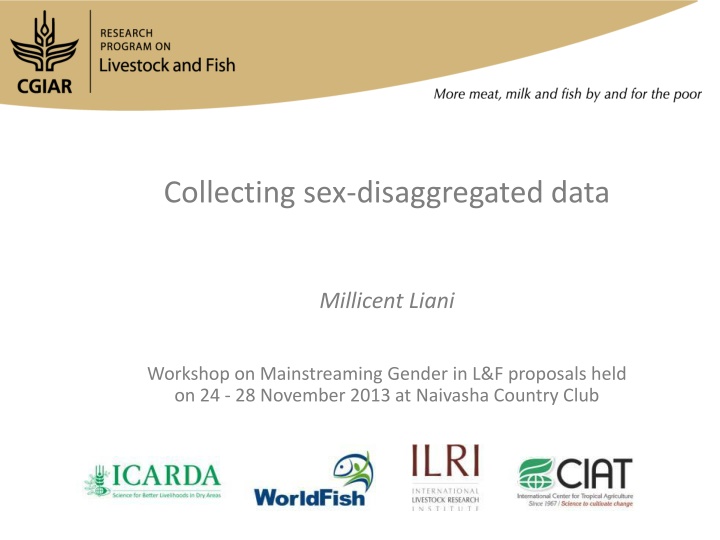
Importance of Sex-Disaggregated Data in Gender Mainstreaming Workshops
Explore the significance of collecting sex-disaggregated data in gender mainstreaming initiatives through a workshop held in 2013. Learn about key gender analysis questions, PRA tools, and examples of data collection techniques emphasizing gender disparities and inclusivity.
Download Presentation

Please find below an Image/Link to download the presentation.
The content on the website is provided AS IS for your information and personal use only. It may not be sold, licensed, or shared on other websites without obtaining consent from the author. If you encounter any issues during the download, it is possible that the publisher has removed the file from their server.
You are allowed to download the files provided on this website for personal or commercial use, subject to the condition that they are used lawfully. All files are the property of their respective owners.
The content on the website is provided AS IS for your information and personal use only. It may not be sold, licensed, or shared on other websites without obtaining consent from the author.
E N D
Presentation Transcript
Collecting sex-disaggregated data Millicent Liani Workshop on Mainstreaming Gender in L&F proposals held on 24 - 28 November 2013 at Naivasha Country Club
Introduction Whenever you intend to formulate a project, you should always be aware of the gendered aspects of the data you collect. This is not limited to differences in the contents of the data, but also in the way you collect data. The various techniques and tools for data collection can lead to different outcomes if you use them with women or men. This session presents: meaning of sex-disaggregated data; key gender analysis questions; and of examples PRA tools and sex-disaggregated data
Sex-disaggregated data Sex-disaggregated data is data that is collected separately from men/boys and women/girls. When talking about sex-disaggregated data, we are not referring to comparisons of male- and female-headed households. In gender analysis, the unit of analysis is the individual men and women from the MHHs and FHHs Female-headed households are often more labor and resource constrained than male-headed households, but these disparities cannot necessarily be attributed to the sex of the household head.
Key gender analysis questions Who does what? How? Where? When? Why? (Labour) Who uses what? How? Where? When? Why? (Access) Who controls what? How? Where? When? Why? (Decision-making and control = power) Who knows what? How? Where? When? Why? (information = power) Who benefits from what? How? Where? When? Why? (benefit-sharing) Who is included in what? How? Where? When? Why? (participation) (source: Hill, C. 2011. Gender and REDD Training CARE Tanzania)
PRA tools and sex-disaggregated data There are a large number of tools used for collecting sex- disaggregated data . Many have been developed in association with PRA methods whose main philosophy can be summarized by the six I s: Iterative goals and processes modified through learning by doing. Innovative techniques adapted to each new problem, rather than used as a fixed procedure Interactive inter disciplinary teams; partnership with local people. Informal no need of pre-determined questionnaires In the community learning through exchange of ideas with rural people in the field. Involving bottom-up approach, participatory
Examples of PRA tools Some of the tools that can be used to collect sex disaggregated data include among others: In-depth interviews; Local histories and time lines; Focus group discussions; Seasonal activities calendars; Household resource map. (N/B: Participants to mention other tools not listed above)
CGIAR Research Program on Livestock and Fish livestockfish.cgiar.org livestockfish.cgiar.org CGIAR is a global partnership that unites organizations engaged in research for a food secure future. The CGIAR Research Program on Livestock and Fish aims to increase the productivity of small-scale livestock and fish systems in sustainable ways, making meat, milk and fish more available and affordable across the developing world.


